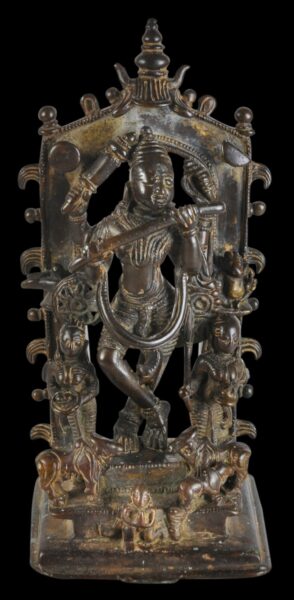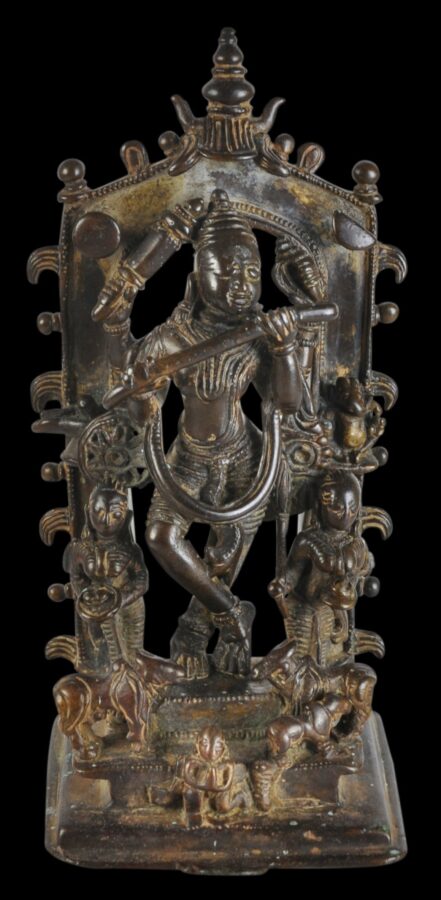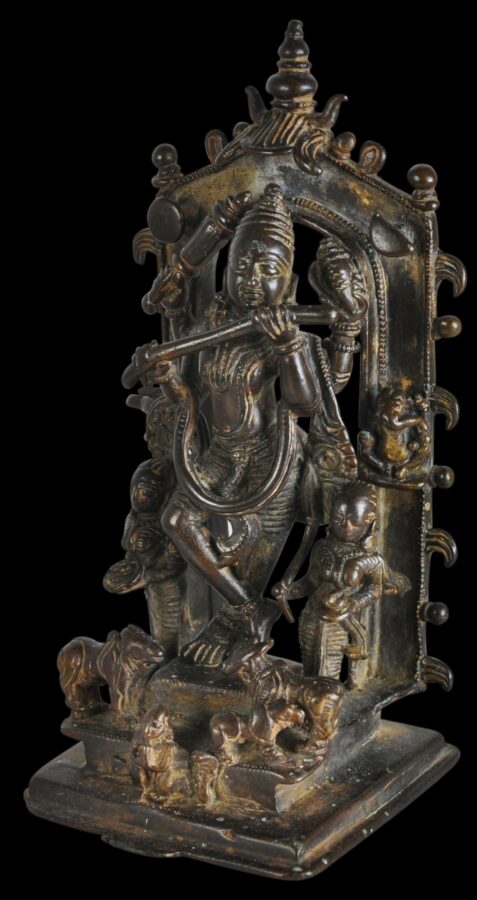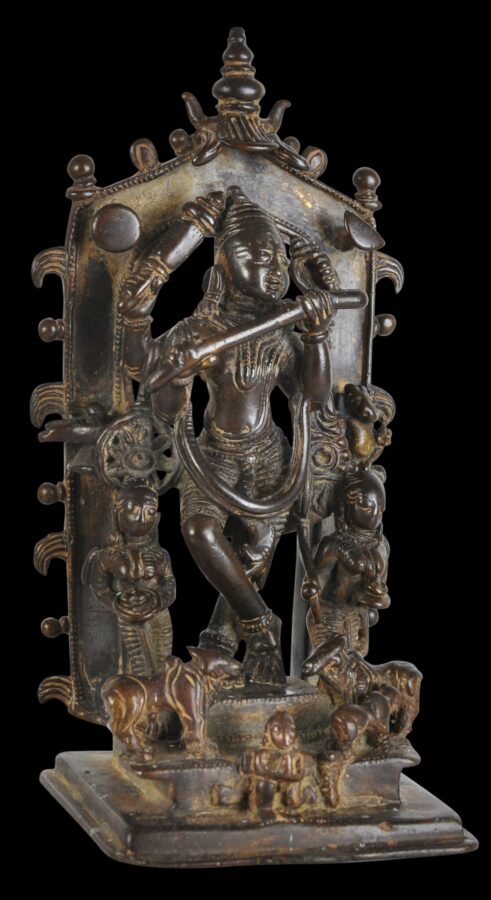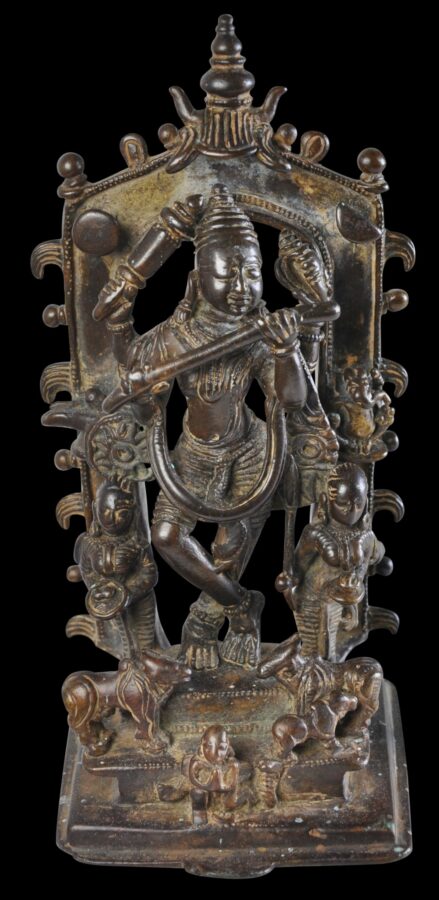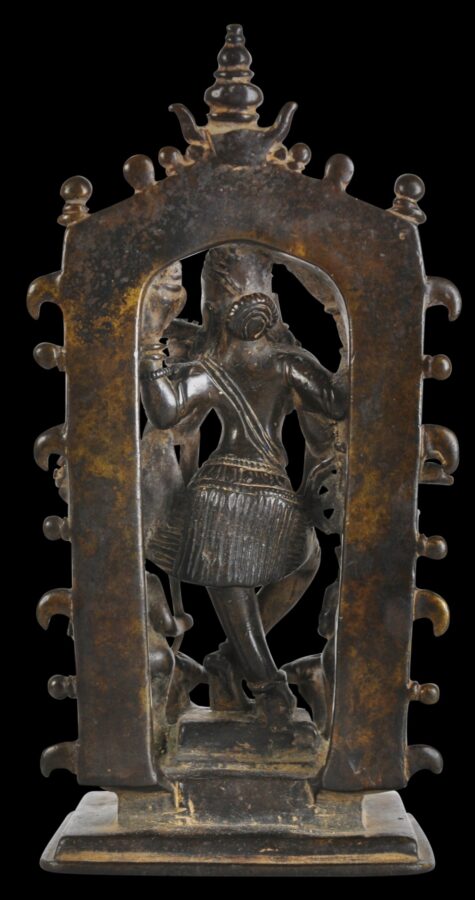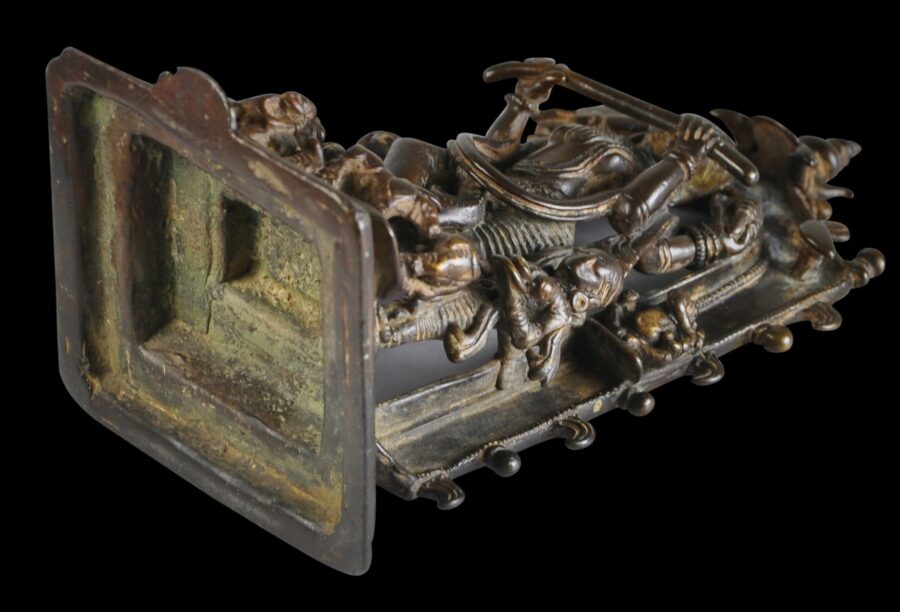This is a particularly rare and unusual bronze shrine that incorporates both Shaivite and Vaishnavite elements.
The central image of Krishna shows the deity with four arms. The lower set hold his flute towards his mouth. Each of the upper two hold attributes – a conch and a gada or mace. A chakra wheel is suspended from the lower right arm. A gopi or milkmaid stands on each side of Krishna and each holds an offering. Two cows, one with a calf, stand before the gopis. A small figure of Garuda is cast to the front of the stand.
The aureole has been cast with flaming or hooked protuberances that alternate with rounded knobs – this is particularly unusual. It is surmounted by a tall kalasha vase finial,and also decorated with a figure of Ganesh and a small lingam on each side, as well as striking and unusual sun and moon emblems. These are all the more unusual because the sun and the moon are emblems associated with Shiva, as is the deity Ganesh, and yet Krishna is part of the Vishnu strand of Hinduism.
In this regard, it is possible that the image is a rare example of a bronze that has arisen from a small movement in southern India whereby practitioners sought to unify the two main strands of Hinduism and so adhere to both Shiva and Vishnu, so that the bronze can be classed as a Shaivite-Vaishnavite image.
The bronze has a rich, dark patina and retains traces of gilding. It is of a good size and in is excellent condition.
References
Guy, J., Indian Temple Sculpture, V&A Publications, 2007.


